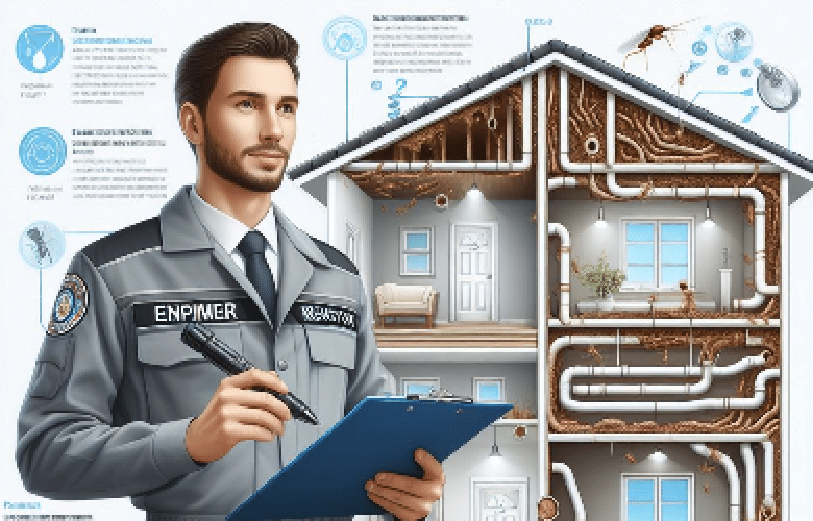Anti Termite Piping Services

Anti Termite Piping Service
In order to provide anti-termite plumbing services, the network of pipes or tubing is usually installed around the foundation or throughout the infrastructure of a building. In order to provide protection against termite infestations, these pipes are made to disperse anti-termite chemicals or treatments. Termiticides or insecticides that kill or repel termites upon contact are often the chemicals used.
Reason For Piping Infestations
Pests that settle inside the plumbing systems of buildings or infrastructures are known as piping infestations, and they may occur for a number of causes:
1. Access Points: Piping systems often have gaps or openings that allow pests to enter. These could be tiny fissures, joints that have inadequate sealing, or holes near utility penetrations. These openings provide pests, such as bugs or rats, entrance to the piping’s interior.
2. Moisture and Condensation: Condensation is can occur in piping systems, particularly in humid environments or in cold water pipes. Pests like drain flies, cockroaches, and certain types of ants are attracted to moisture. Furthermore, wet conditions brought on by leaky pipes or drainage issues might attract insects looking for water sources.
3. Food Sources: Pests could discover organic material that has accumulated inside pipes to be a source of nourishment. Cockroaches and drain flies, in instance, are frequently attracted to food particles that build up in kitchen drains. Some pests can even find nourishment from the organic stuff that accumulates in waste water or wastewater pipelines.
4. Warmth and Shelter: Particularly in the winter, piping systems can give pests both warmth and cover. Particularly warm water pipes may draw bugs looking for somewhere to hide from the cold.
5.Adjacent Infestation: If there are any existing pest infestations in the vicinity, the bugs may move into the piping system through utility connections, shared walls, or other openings. Pests have the ability to move through pipelines from one place to a different one, establishing new colonies inside a system of pipes.
6. Lack of Maintenance: Infestation issues can be made worse by plumbing systems that are neglected or improperly maintained. Pests are more inclined to reside in pipes that are corroded, broken, or obstructed. Frequent upkeep and inspections may help in finding and dealing with potential insect entry points as well as atmosphere conducive to infestations.
7. Inadequate Pest Control Measures: Pipe infestation may result from insufficient or poor pest management procedures within structures. In plumbing systems, wherein they are less likely to be disrupted pests may seek shelter or breeding locations if other parts of the building aren’t properly regulated.
Addressing these factors through proper maintenance, sealing of entry points, moisture control, and integrated pest management practices can help prevent and mitigate piping infestations. Regular inspections by pest control professionals can also help identify and address pest issues before they escalate.
What We do
List of pre-termite treatment methods:
1.Assessment: A thorough inspection of the property to find weak spots and termite access locations.
2.Design: Arranging the piping the system’s arrangement and configuration to guarantee full coverage.
3.Installation: The pipes are positioned appropriately inside the building or around its perimeter.
4.Connecting the pipes to a pump mechanism or centralised distribution system.
5.Chemical Treatment: To build a barrier of security, the anti-termite chemicals are injected or distributed across the piping system.
6.Monitoring: Performing routine upkeep and inspection to guarantee the system’s efficacy and reapplying solutions as required.
